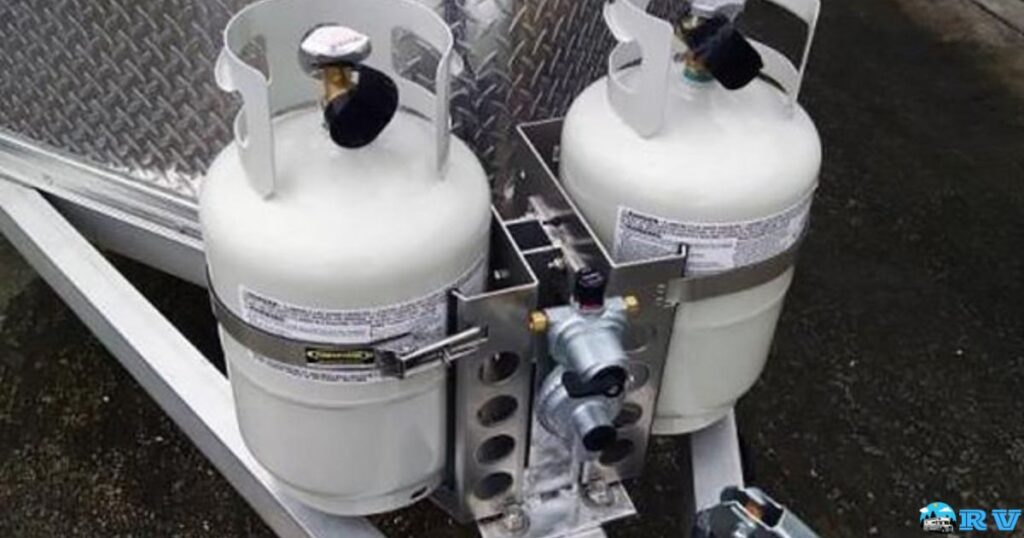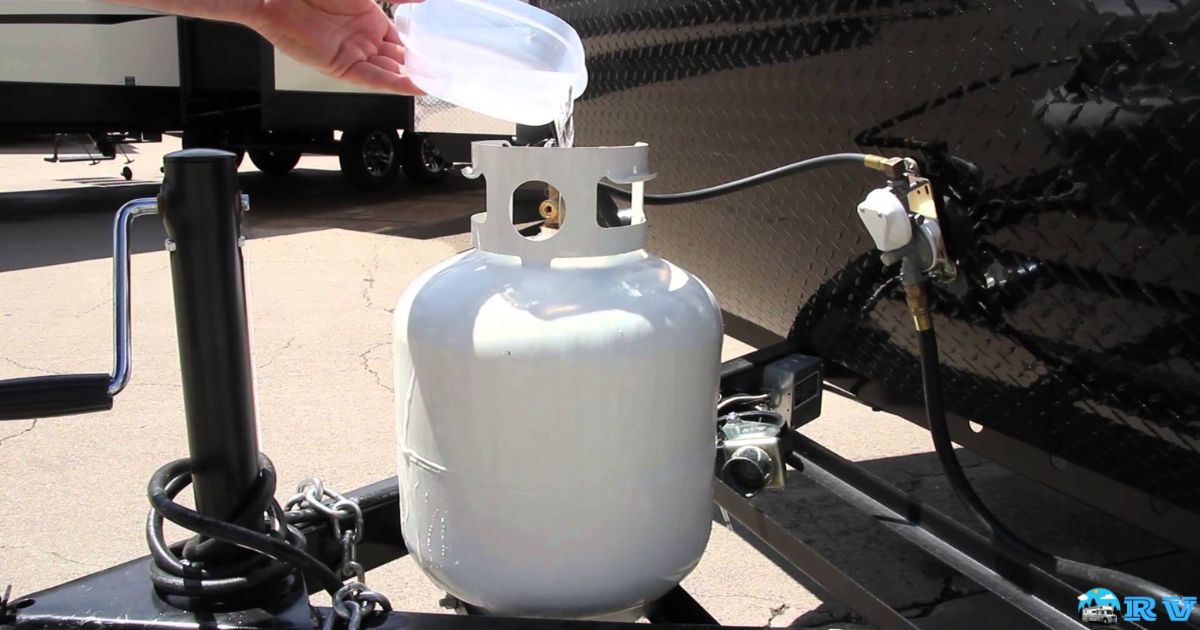Connecting a 100lb propane tank to an RV involves a process of ensuring safe and efficient fuel supply for various needs such as cooking, heating, and powering appliances while on the road. This task requires specific hardware and a clear understanding of safety protocols to prevent any hazards. T
Are you planning a road trip in your RV and worried about running out of propane. Imagine the convenience of having a larger propane supply while exploring the great outdoors. But how to connect 100lb propane tank to RV? This question is crucial for extended trips and for those seeking greater autonomy in their RV travels.
A 100lb propane tank offers a substantial amount of fuel, significantly more than the standard tanks typically used in RVs. This larger capacity means longer periods between refills, making it ideal for long-term travelers or those staying in remote areas.
Understanding the Basics of Propane Tanks and RVs
Propane tanks are an essential part of RV living, providing the fuel necessary for heating, cooking, and running appliances. They come in various sizes, with the 100lb tank being one of the larger and more popular options for long-term travelers.
It’s important to understand that these tanks store propane in a liquid form, which vaporizes when released, powering your RV’s amenities. Before attempting to connect a propane tank to your RV, familiarize yourself with the components of both the tank and your RV’s propane system. This includes the tank itself, regulators, hoses, and connection fittings.
Choosing the Right Equipment for Connecting a 100lb Propane Tank
Selecting the correct equipment for connecting your propane tank to the RV is vital. This includes a high-pressure hose, a regulator, and appropriate fittings. Ensure that these components are rated for the size and type of your propane tank and are compatible with your RV’s system.
Using incorrect or substandard equipment can lead to dangerous leaks or system failures. When purchasing equipment, it’s advisable to opt for quality over cost-saving. Look for hoses and regulators specifically designed for RV use and 100lb propane tanks. These are built to withstand the rigors of road travel and varying weather conditions.
Guide to Safely Connect Your Propane Tank to Your RV
| Step | Description | Equipment Needed |
| 1 | Turn off all propane-powered appliances and the RV’s main propane valve | – |
| 2 | Connect the high-pressure hose to the propane tank | High-pressure hose |
| 3 | Attach the other end of the hose to the RV’s propane system | – |
| 4 | Secure all connections and check for any leaks | Soap water solution |
| 5 | Slowly open the propane tank valve and check the system pressure | Pressure gauge |
Connecting a 100lb propane tank to your RV starts with safety. Ensure all propane-powered appliances in the RV are turned off, including the main propane valve. This prevents any accidental ignition during the connection process. Always perform this task in a well-ventilated area, free from open flames or sparks.
After preparing the area, attach one end of your high-pressure hose to the propane tank. Ensure this connection is tight and secure. Then, connect the other end of the hose to your RV’s propane system. Once connected, use a soap water solution to check for leaks at both connection points. If no bubbles form, your system is safe to use.
Essential Safety Tips for Handling 100lb Propane Tanks

When handling 100lb propane tanks, always prioritize safety. These tanks are heavy and contain a highly flammable gas, making proper handling essential. Always move the tank using appropriate equipment or techniques to avoid injury. Ensure the tank is always upright and secured during transport to prevent accidents.
Regularly inspect your propane tank and associated equipment for any signs of wear, damage, or leaks. This includes checking hoses, connections, and the tank itself for dents or rust. If you suspect any issues, cease usage immediately and consult a professional. Remember, a well-maintained tank is a safe tank.
Troubleshooting Common Issues in Propane Tank Connections
If you experience problems with your propane tank connection, first check for leaks. Use a soap water solution along the hose and at connection points. Bubbles indicate a leak and the need for immediate repair. Never use a flame or heat source to check for leaks, as this poses a serious fire risk.
Another common issue is low propane flow, which can be caused by a malfunctioning regulator or a partially closed valve. Ensure the tank valve is fully open and check the regulator for any signs of damage or malfunction. Sometimes, simply resetting the regulator by turning it off and then back on can resolve flow issues.
Regulatory Compliance Legal Requirements for Propane Tanks in RVs
It’s crucial to be aware of and comply with local and national regulations regarding propane tank usage in RVs. These regulations can vary by region and cover aspects such as tank size, placement, transportation, and connection standards. Ensuring compliance not only keeps you safe but also avoids legal complications while traveling.
Consult with local authorities or RVing communities to understand the specific requirements in your area or the areas you plan to travel. This includes any permits or inspections that might be necessary. Remember, regulations are in place for your safety and the safety of those around you.
Maximizing Propane Efficiency Best Practices for RV Users
Propane is a vital energy source for many recreational vehicles (RVs). To maximize its efficiency, regular monitoring of the propane system is essential. This involves checking for leaks and ensuring all connections are tight and secure. Using a propane tank gauge helps in monitoring fuel levels, allowing timely refills and preventing unexpected shortages.
It’s beneficial to invest in modern, energy-efficient appliances that consume less propane. Efficient usage of propane also extends to mindful living habits. This includes using propane for essential needs only and avoiding wastage.
For instance, turning off heaters or stoves when not in use and opting for outdoor cooking can significantly reduce propane consumption. Insulating your RV properly ensures less propane is needed for heating. These practices not only save propane but also contribute to a more sustainable lifestyle while on the road.
Maintenance and Care for Your RV’s Propane System
Maintaining your RV’s propane system is crucial for safety and efficiency. Regular inspections should be conducted to identify any potential issues like leaks or damage to the hoses and connectors. It’s advisable to have a professional check the system annually. Replacing older parts and ensuring the system complies with current safety standards is also important.
Cleaning and proper storage of the propane system enhance its longevity. This includes ensuring that the propane tanks are kept in a well-ventilated area, free from extreme temperatures and direct sunlight. Regular cleaning of the tank’s exterior prevents rust and corrosion.
Advantages of Using a 100lb Propane Tank in Your RV
A 100lb propane tank offers several advantages for RV users. Firstly, it provides a larger fuel reserve, reducing the frequency of refills. This is especially beneficial for long trips or when traveling to remote areas where propane might not be readily available. Secondly, a larger tank can be more cost-effective in the long run, as buying propane in bulk often comes at a lower price.
| Feature | 100lb Tank | Smaller Tanks |
| Refill Frequency | Less Frequent | More Frequent |
| Cost-Effectiveness | Higher | Lower |
| Suitability for Trips | Long/Remote Areas | Shorter Trips |
| Storage Space Required | More | Less |
| Availability of Propane | More Consistent | Less Consistent |
However, it’s important to consider the additional weight and space a 100lb tank occupies. This may require modifications to your RV for safe and secure transportation. Additionally, users should familiarize themselves with connecting and disconnecting the tank, adhering to safety protocols to prevent accidents.
Preparing for Emergencies What to Do in Case of Propane Leaks
In case of a propane leak, it’s crucial to act quickly and safely. First, turn off the main gas supply valve on your propane tank to prevent further gas escape. Immediately evacuate the RV and ensure all occupants are at a safe distance. Avoid using any electrical devices, including light switches and phones, as they can ignite the gas.
Contact emergency services once you are in a safe location, especially in situations where you need to deal with critical issues like a blow out RV water lines. Do not re-enter the RV until it has been declared safe by professionals. It’s also advisable to have a propane gas detector installed in your RV, as it can alert you to leaks before they become hazardous.
FAQs
Can I Connect a 100lb Propane Tank to Any RV?
Yes, most RVs can accommodate a 100lb propane tank, but check your RV’s specifications for compatibility.
What Tools Do I Need to Connect the Tank?
Typically, you’ll need a propane regulator, a wrench for tightening connections, and leak-detection solution.
How Do I Check for Leaks in the Connection?
Apply soapy water to the connections; bubbling indicates a leak.
Conclusion
Connecting a 100lb propane tank to your RV requires careful attention to safety and correct procedures. First, ensure the RV and the tank are on level ground. Turn off all propane appliances and the main gas supply valve on your RV. Then, securely attach the regulator hose to the propane tank, ensuring a tight fit. Check for leaks by applying soapy water to the connections and observing for bubbles.
Once connected, slowly open the valve on the propane tank to allow gas to flow. Monitor the propane gauge to ensure it’s functioning correctly. It’s crucial to regularly inspect the hose and connections for wear and tear. Always follow the manufacturer’s instructions and safety guidelines. With these steps, you can safely enjoy the benefits of a large propane tank for your RV adventures.











